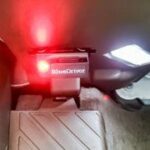Navigating the world of car diagnostics can be confusing, especially when you encounter terms like OBDII and wonder about compatibility. If you’re a Honda owner looking to use an OBDII scanner, understanding the pin configuration is crucial. This guide breaks down the essentials of “Obdii Pins Honda” to help you choose the right diagnostic tool and avoid frustrating compatibility issues.
Understanding OBDII Pin Configurations in Honda Vehicles
The On-Board Diagnostics II (OBDII) system became a standard in the United States in 1996, with European and Japanese manufacturers, including Honda, adopting it shortly after. At its heart is the 16-pin SAE J1962 diagnostic connector, universally known as the OBDII port. This port is your gateway to accessing your vehicle’s computer for diagnostics and performance monitoring.
While the port itself is standardized with 16 pins, not all pins are universally used. Different communication protocols utilize specific sets of pins. These protocols are the languages that your car and the scan tool use to communicate. There are five main OBDII communication protocols, each potentially using a different combination of pins.
The 2017 Honda Ridgeline, for example, utilizes a specific set of pins in its OBDII port:
- Pins Present: 4, 5, 6, 7, 9, 14, 15, and 16
This pin configuration is not arbitrary. It indicates which communication protocols the vehicle can theoretically support. In the case of the Ridgeline, this pinout suggests compatibility with ISO-9141 and CAN-bus ISO-15765 protocols, and potentially ISO-14230 as well.

